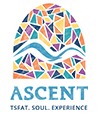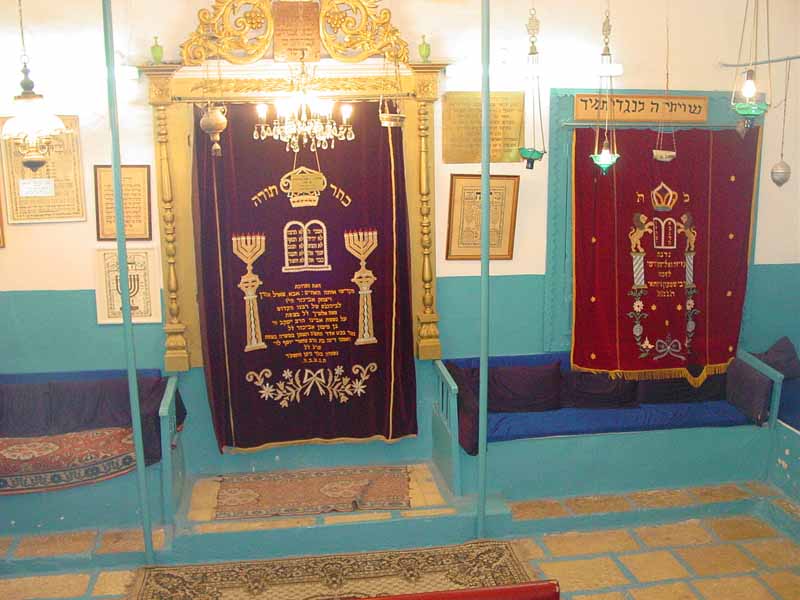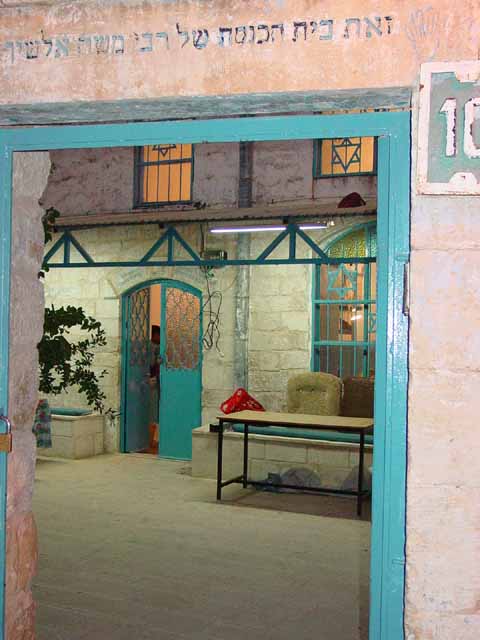Come Shabbat day some 500 years ago, the ancient Alsheich Shul was the place to be. Of all the famous synagogues that flourished in Tsfat’s “Golden Era,” perhaps none other drew a larger crowd.
When Rabbi Moshe Alsheich gave one of his famous commentaries on the weekly Torah reading, even the Holy Ari (Rabbi Yitzchak Luria) and Rabbi Yosef Karo, author of the famed Code of Jewish Law, came to attend.
“Heavenly angels descend on Shabbat to listen to his sermons,” the Arizal once said. “How could I not come as well?”
They were the fortunate ones, to have been able to travel down the narrow, winding Alsheich Lane (as it is now called) and enter the door set amidst a high, stone wall — now overflowing with grapevines — leading to the courtyard and main sanctuary where Rabbi Alsheich gave his weekly talks. Today, the teachings of Rabbi Alsheich can be gleaned from the numerous volumes that fill Torah libraries, including in English translation as at Ascent.
SPARED FROM EARTHQUAKES
Nestled in between the famed Abuhav and Karo synagogues (and sharing the same mountainside with a host of other landmark houses of prayer), only the Alsheich synagogue emerged virtually intact from the devastating earthquakes which tore Tsfat asunder in 1759 and 1837.
The shul’s caretaker, Yossi Buchnik, says there are a number of possible reasons for this, the most obvious one being that Rabbi Alsheich constructed the building with numerous arches and beams which withstood the powerful quakes.
Then again, he postulates, it could be because the synagogue remained true for hundreds of years to Rabbi Alsheich’s desire that it not include a women’s section. In fact, the Alsheich Shul may be the only house of prayer in Tsfat today that still does not include a women’s section. Once, when a women’s section was being considered, Rabbi Alsheich appeared in a dream warning against its construction.
For almost half a millenium, the shul also never had bathroom facilities on the premises. Rabbi Alsheich had firmly stated his opposition to such facilities within close proximity to the house of prayer and learning. Two attempts had been made to build a bathroom and finally, a few years ago, one was finally built in the outer courtyard. According to local tradition, all three of the builders passed from this world shortly within the time of their attempts.
VISITING HOURS
Nowadays, it is difficult to get the synagogue opened to visitors. The shul’s leaders are wary of visitors because of an extrememly valuable artifact which was stolen in recent years. While the item was recovered and the story relegated to the newspaper headlines, the keys to the Alsheich are nonetheless tightly guarded.
It is possible to visit the synagogue, however, during the Shabbos morning minyan. The Alsheich is also opened for one hour every evening when a small group of men gather to learn before evening prayers (aprroximately between 7-8 p.m. in the summer and between 4:30-5:30 p.m. in the winter).
Similar in design to other synagogues of its era, the Alsheich does contain unique artifacts, including a Torah crown which predates the Spanish expulsion. Made in Spain, it bears the date tsedek (1434 C.E.) and the inscription kehilot hakodesh ba’aley tshuvah “the holy congregation of the penitent.”
HOLY!
While the Alsheich shul’s contents are precious, the word “Kadosh” (holy) which appears after the name of Rabbi Moshe Alsheich, is but a clue to its carrier’s status. Only four rabbis ever had this title assoiated with their name.
Yet despite his renown as one of the greatest sermonizers of the Jewish world, Rabbi Alsheich spent much of his life trying to acquire an aspect of Torah wisdom which was not available to him — the mystical aspects of the Torah — kabbala.
Rabbi Alsheich, who was born in Adrianople, Turkey in 5268 (1508 CE), came to Tsfat in his youth, where he studied in the yeshiva headed by Rabbi Karo, who at the time also served as the leader of Tsfat’s prestigious rabbinical court.
Ordained by Rabbi Karo, Rabbi Alsheich was said to have mastered one of the 70 facets of Torah exegesis, which he expounded in his famous work Torat Moshe. His own student, Rabbi Chaim Vital, had become the leading disciple of the Ari, and of Rabbi Vital the Ari had once said that his soul had come to this world for the sole purpose of teaching Creation’s secrets to Rabbi Vital.
Ironically, the secrets which had become available to his own student, Rabbi Vital, had been kept a distance from Rabbi Alsheich.
Although the Ari himself had traveled to Rabbi Alsheich to hear his sermons, the reciprocity was not returned. When Rabbi Alsheich accompanied Rabbi Vital to the Ari, he was rebuffed.
The Ari’s continual refusal to admit Rabbi Alsheich into his inner circle of disciples finally broke him into bitter tears. “What is my sin that you refuse to accept me as a student?” Rabbi Alsheich cried to the Ari.
The Ari saw Rabbi Alsheich’s pain, but still did not change his position. “True…I do refuse you…not because your comprehension is poor, G-d forbid….but because you have a different purpose in life,” the Ari told him. “Your task is to explain Torah through (the direct meaning)….”
Still not giving up, Rabbi Alsheich decided to go anyway to the Ari’s classes, only to find that each time he was overcome by an enormous desire to sleep.
THE LEGACY
Indeed, Rabbi Alsheich’s Torah commentaries were collected in his famous series of books, Torat Moshe. And with the passing of Rabbi Karo, he became the head of the Tsfat Beit Din (Jewish court).
And although this was the main purpose of Rabbi Alsheich — enlightening the world as to the simple meaning of the Torah, Rabbi Alsheich did try to learn as many Torah secrets as possible. The Holy Ari did let Rabbi Alsheich know that in another gilgul (incarnation) he indeed had been a master of kabbala as well.
~~~~~~~~~~~~~~~~~~~
Buy books about Safed and the ancient masters of Kabbalah at the Kabbala Online Shop.
Chana Katz, a former South Florida journalist, lives in Tsfat. Her articles on life in Israel have reached publications throughout the world.


